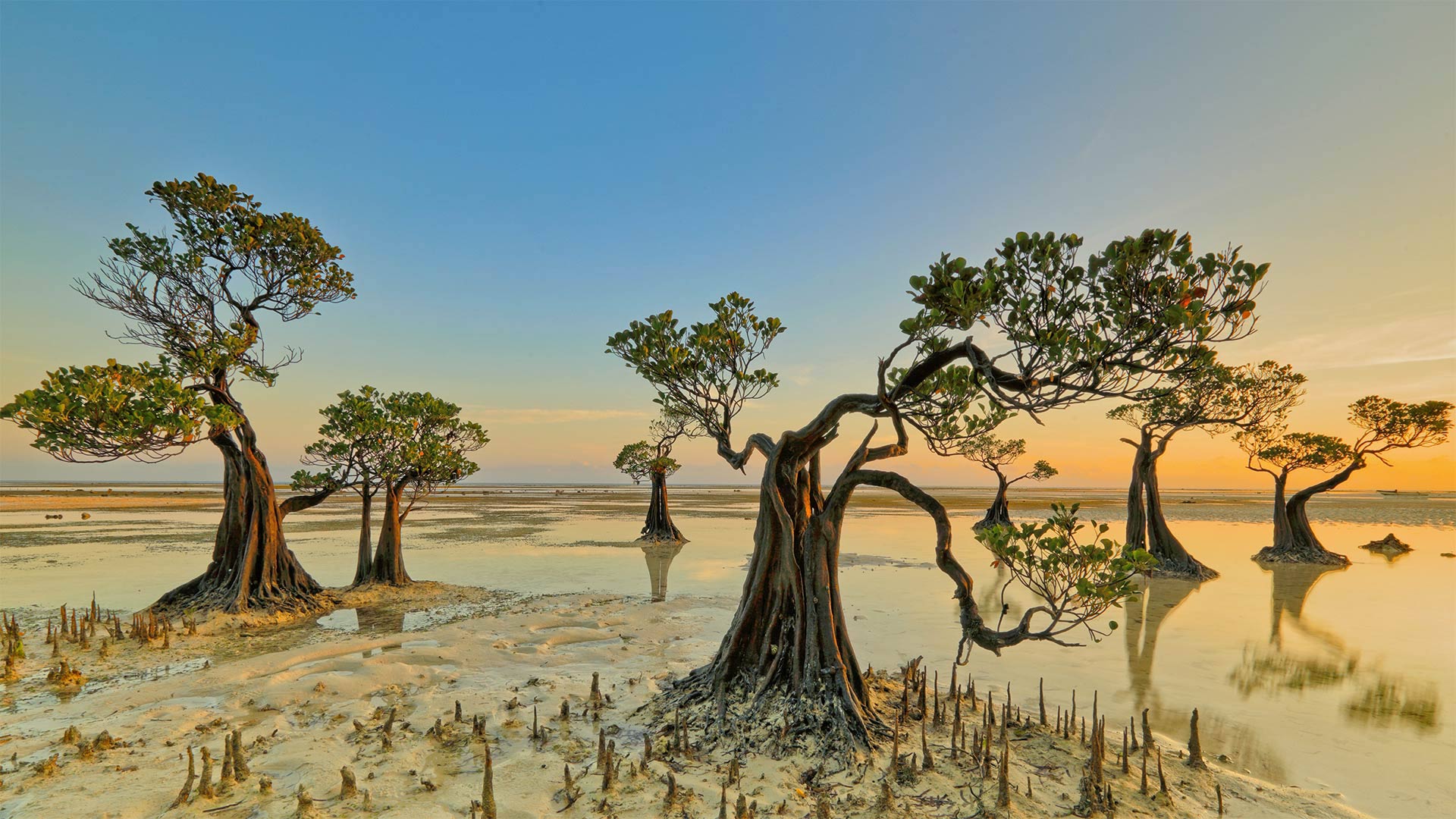Walakiri海滩的红树林,印度尼西亚松巴岛 Mangrove trees, Walakiri Beach, Sumba Island, Indonesia (© Tengguo Wu/Getty Images)

Walakiri海滩的红树林,印度尼西亚松巴岛 Mangrove trees, Walakiri Beach, Sumba Island, Indonesia (© Tengguo Wu/Getty Images)
The 'dancing trees' of Sumba Island
On the northern coast of Indonesia's Sumba Island, a stand of mangrove trees appears to dip and sway to summon another dreamy sunrise. Walakiri Beach is gently sloped, so it's easy for a visitor to walk out into the knee-deep water to examine the extraordinary transitional zone of a mangrove ecosystem. Mangroves thrive here at the boundary between land and sea, growing in coastal salt water and low-oxygen conditions where other trees would quickly die. Their complex root systems filter out the salt and form a strong natural defense against storm surges, rising sea levels, and coastal erosion. Mangroves also create aquatic nursery habitats that support a highly diverse range of juvenile fish and crustaceans.
But despite their critical role in maintaining healthy oceans and coastlines, mangroves are disappearing fast, several times faster than forests on land. The United Nations estimates that the world has lost half its mangrove coverage in just the last 40 years. To raise awareness of the importance of mangrove ecosystems and to promote solutions for their sustainable management and conservation, the UN has declared that July 26 is International Day for the Conservation of the Mangrove Ecosystem. We'll dance to that.
桑巴岛的“舞动的树”
在印度尼西亚苏姆巴岛的北部海岸,一片红树林似乎在倾斜和摇摆,召唤着另一个梦幻般的日出。瓦拉基里海滩的坡度很平缓,因此游客很容易走出去,走进齐膝深的海水中,去考察红树林生态系统中非同寻常的过渡地带。红树林生长在陆地和海洋的交界处,生长在沿海咸水和低氧环境中,其他树木很快就会死亡。它们复杂的根系过滤掉盐分,形成强大的天然防御系统,抵御风暴潮、海平面上升和海岸侵蚀。红树林还创造了水生苗圃栖息地,支持高度多样化的幼鱼和甲壳类动物。
但是,尽管红树林在维持海洋和海岸线健康方面发挥着关键作用,但它们正在迅速消失,比陆地上的森林快数倍。联合国估计,仅仅在过去40年里,世界红树林的覆盖率就减少了一半。为了提高人们对红树林生态系统重要性的认识,促进红树林生态系统的可持续管理和保护,联合国宣布7月26日为国际红树林生态系统保护日。我们就跟着跳舞。
评论已关闭